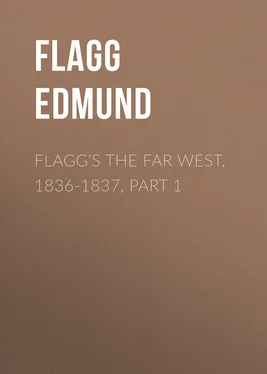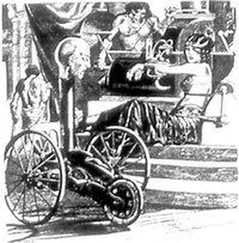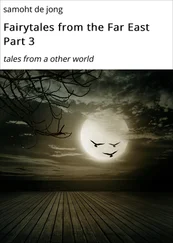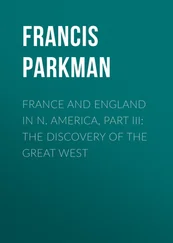Edmund Flagg - Flagg's The Far West, 1836-1837, part 1
Здесь есть возможность читать онлайн «Edmund Flagg - Flagg's The Far West, 1836-1837, part 1» — ознакомительный отрывок электронной книги совершенно бесплатно, а после прочтения отрывка купить полную версию. В некоторых случаях можно слушать аудио, скачать через торрент в формате fb2 и присутствует краткое содержание. Издательство: Иностранный паблик, Жанр: foreign_antique, foreign_prose, Путешествия и география, на английском языке. Описание произведения, (предисловие) а так же отзывы посетителей доступны на портале библиотеки ЛибКат.
- Название:Flagg's The Far West, 1836-1837, part 1
- Автор:
- Издательство:Иностранный паблик
- Жанр:
- Год:неизвестен
- ISBN:нет данных
- Рейтинг книги:4 / 5. Голосов: 1
-
Избранное:Добавить в избранное
- Отзывы:
-
Ваша оценка:
- 80
- 1
- 2
- 3
- 4
- 5
Flagg's The Far West, 1836-1837, part 1: краткое содержание, описание и аннотация
Предлагаем к чтению аннотацию, описание, краткое содержание или предисловие (зависит от того, что написал сам автор книги «Flagg's The Far West, 1836-1837, part 1»). Если вы не нашли необходимую информацию о книге — напишите в комментариях, мы постараемся отыскать её.
Flagg's The Far West, 1836-1837, part 1 — читать онлайн ознакомительный отрывок
Ниже представлен текст книги, разбитый по страницам. Система сохранения места последней прочитанной страницы, позволяет с удобством читать онлайн бесплатно книгу «Flagg's The Far West, 1836-1837, part 1», без необходимости каждый раз заново искать на чём Вы остановились. Поставьте закладку, и сможете в любой момент перейти на страницу, на которой закончили чтение.
Интервал:
Закладка:
Along the river-banks in the northern suburbs of the city lie the scattered ruins of an ancient fortification of the Spanish government, when it held domination over the territory; and one circular structure of stone, called "Roy's Tower," now occupied as a dwelling, yet remains entire. There is also an old castle of stone in tolerable preservation, surrounded by a wall of the same material. 78Some of these venerable relics of former time – alas! for the irreverence of the age – have been converted into limekilns, and into lime itself, for aught that is known to the contrary! The waterworks, General Ashley's beautiful residence, and that series of ancient mounds for which St. Louis is famous, were next passed in succession, while upon the right stretched out the long low outline of "Blood Island" in the middle of the stream. 79For several miles above the city, as we proceeded up the river, pleasant villas, with their white walls and cultivated grounds, were caught from time to time by the eye, glancing through the green foliage far in the interior. It was a glorious day. Silvery cloudlets were floating along the upper sky like spiritual creations, and a fresh breeze was rippling the waters: along the banks stood out the huge spectral Titans of the forest, heaving aloft their naked limbs like monuments of "time departed," while beneath reposed the humble hut and clearing of the settler.
It was nearly midday, after leaving St. Louis, that we reached the embouchure of the Missouri. Twenty miles before attaining that point, the confluent streams flow along in two distinct currents upon either shore, the one white, clayey, and troubled, the other a deep blue. The river sweeps along, indeed, in two distinct streams past the city of St. Louis, upon either side of Blood Island, nor does it unite its heterogeneous floods for many miles below. At intervals, as the huge mass rolls itself along, vast whirls and swells of turbid water burst out upon the surface, producing an aspect not unlike the sea in a gusty day, mottled by the shadows of scudding clouds. Charlevoix, 80the chronicler of the early French explorations in North America, with reference to this giant confluence, more than a century since thus writes: "I believe this is the finest confluence in the world. The two rivers are much of the same breadth, each about half a league, but the Missouri is by far the most rapid, and seems to enter the Mississippi like a conqueror, through which it carries its white waves to the opposite shore without mixing them. Afterward it gives its colour to the Mississippi, which it never loses again, but carries quite down to the sea." This account, with all due consideration for the venerable historian, accords not precisely with the scene of the confluence at the present day, at least not as it has appeared to myself. The Missouri, indeed, rolls in its heavy volume with the impetuosity and bearing of a "conqueror" upon the tranquil surface of its rival; but entering, as it does, at right angles, its waters are met in their headlong course, and almost rolled back upon themselves for an instant by the mighty momentum of the flood they strike. This is manifested by, and accounts for, that well-defined line of light mud-colour extending from bank to bank across its mouth, bounded by the dark blue of the Upper Mississippi, and flowing sluggishly along in a lengthened and dingy stain, like a fringe upon the western shore. The breadth of the embouchure is about one mile, and its channel lies nearly in the centre, bounded by vast sand-bars – sediment of the waters – upon either side. The alluvial deposites, with which it is heavily charged, accumulate also in several islands near the confluence, while the rivers united spread themselves out into an immense lake. As the steamer glides along among these islands opposite the Missouri, the scene with its associations is grand beyond description. Far up the extended vista of the stream, upon a lofty bluff, stands out a structure which marks the site of the ancient military post of "Belle Fontaine;" 81while on the opposite bank, stretching inland from the point heavily wooded, lies the broad and beautiful prairie of the "Mamelles." 82Directly fronting the confluence stand a range of heights upon the Illinois shore, from the summit of which is spread out, like a painting, one of the most extraordinary views in the world.
The Mississippi, above its junction with its turbid tributary, is, as has been remarked, a clear, sparkling, beautiful stream; now flashing in silvery brilliance over its white sand-bars, then retreating far into the deep indentations of its shady banks, and again spreading out its waters into a tranquil, lakelike basin miles in extent, studded with islets.
The far-famed village of Alton, situated upon the Illinois shore a few miles above the confluence, soon rose before us in the distance. When its multiform declivities shall have been smoothed away by the hand of enterprise and covered with handsome edifices, it will doubtless present a fine appearance from the water; as it now remains, its aspect is rugged enough. The Penitentiary, a huge structure of stone, is rather too prominent a feature in the scene. Indeed, it is the first object which strikes the attention, and reminds one of a gray old baronial castle of feudal days more than of anything else. The churches, of which there are several, and the extensive warehouses along the shore, have an imposing aspect, and offer more agreeable associations. As we drew nigh to Alton, the fireman of our steamer deemed proper, in testimonial of the dignity of our arrival, to let off a certain rusty old swivel which chanced to be on board; and to have witnessed the marvellous fashion in which this important manœuvre was executed by our worthies, would have pardoned a smile on the visage of Heraclitus himself. One lanky-limbed genius held a huge dipper of gunpowder; another, seizing upon the extremity of a hawser, and severing a generous fragment, made use thereof for wadding; a third rammed home the charge with that fearful weapon wherewith he poked the furnaces; while a fourth, honest wight – all preparation being complete – advanced with a shovel of glowing coals, which, poured upon the touchhole, the old piece was briefly delivered of its charge, and the woods, and shores, and welkin rang again to the roar. If we made not our entrance into Alton with "pomp and circumstance," it was surely the fault of any one but our worthy fireman.
The site of Alton, at the confluence of three large and navigable streams; its extensive back country of great fertility; the vast bodies of heavy timber on every side; its noble quarries of stone; its inexhaustible beds of bituminous coal only one mile distant, and its commodious landing, all seem to indicate the design of Nature that here should arise a populous and wealthy town. The place has been laid off by its proprietors in liberal style; five squares have been reserved for public purposes, with a promenade and landing, and the corporate bounds extend two miles along the river, and half a mile into the interior. Yet Alton, with all its local and artificial advantages, is obnoxious to objections. Its situation, in one section abrupt and precipitous, while in another depressed and confined, and the extensive alluvion lying between the two great rivers opposite, it is believed, will always render it more or less unhealthy; and its unenviable proximity to St. Louis will never cease to retard its commercial advancement.
The city of Alton, as it is now styled by its charter, was founded in the year 1818 by a gentleman who gave the place his name; 83but, until within the six years past, it could boast but few houses and little business. Its population now amounts to several thousands, and its edifices for business, private residence, or public convenience are large and elegant structures. Its stone churches present an imposing aspect to the visiter. The streets are from forty to eighty feet in width, and extensive operations are in progress to render the place as uniform as its site will admit. A contract has been recently entered upon to construct a culvert over the Little Piasa Creek, which passes through the centre of the town, upon which are to be extended streets. The expense is estimated at sixty thousand dollars. The creek issues from a celebrated fountain among the bluffs called "Cave Spring." Alton is not a little celebrated for its liberal contribution to the moral improvements of the day. To mention but a solitary instance, a gentleman of the place recently made a donation of ten thousand dollars for the endowment of a female seminary at Monticello, 84a village five miles to the north; and measures are in progress to carry the design into immediate execution. Two railroads are shortly to be constructed from Alton; one to Springfield, seventy miles distant, and the other to Mount Carmel on the Wabash. The stock of each has been mostly subscribed, and they cannot fail, when completed, to add much to the importance of the places. Alton is also a proposed terminus of two of the state railroads, and of the Cumberland Road. 85
Читать дальшеИнтервал:
Закладка:
Похожие книги на «Flagg's The Far West, 1836-1837, part 1»
Представляем Вашему вниманию похожие книги на «Flagg's The Far West, 1836-1837, part 1» списком для выбора. Мы отобрали схожую по названию и смыслу литературу в надежде предоставить читателям больше вариантов отыскать новые, интересные, ещё непрочитанные произведения.
Обсуждение, отзывы о книге «Flagg's The Far West, 1836-1837, part 1» и просто собственные мнения читателей. Оставьте ваши комментарии, напишите, что Вы думаете о произведении, его смысле или главных героях. Укажите что конкретно понравилось, а что нет, и почему Вы так считаете.












